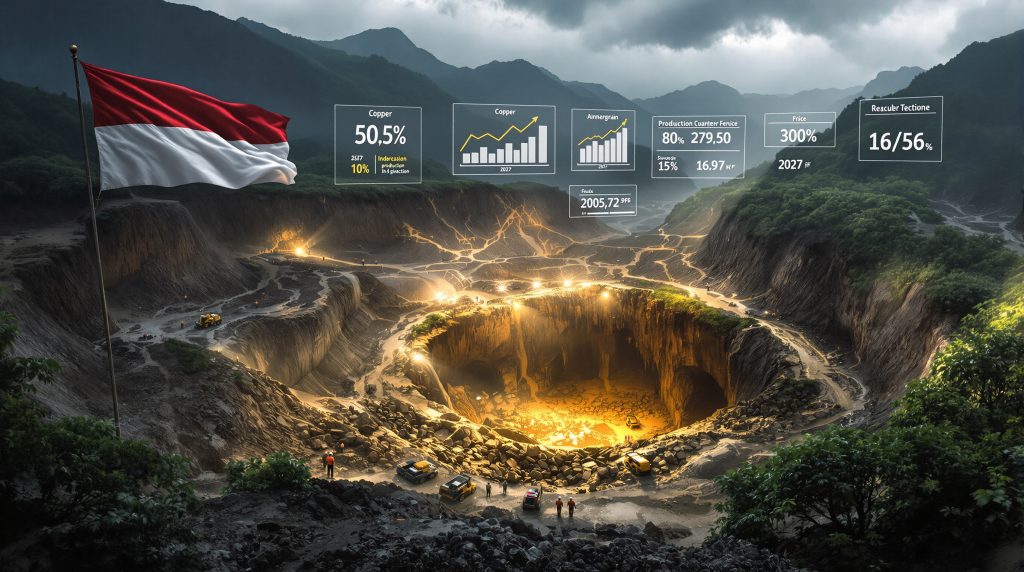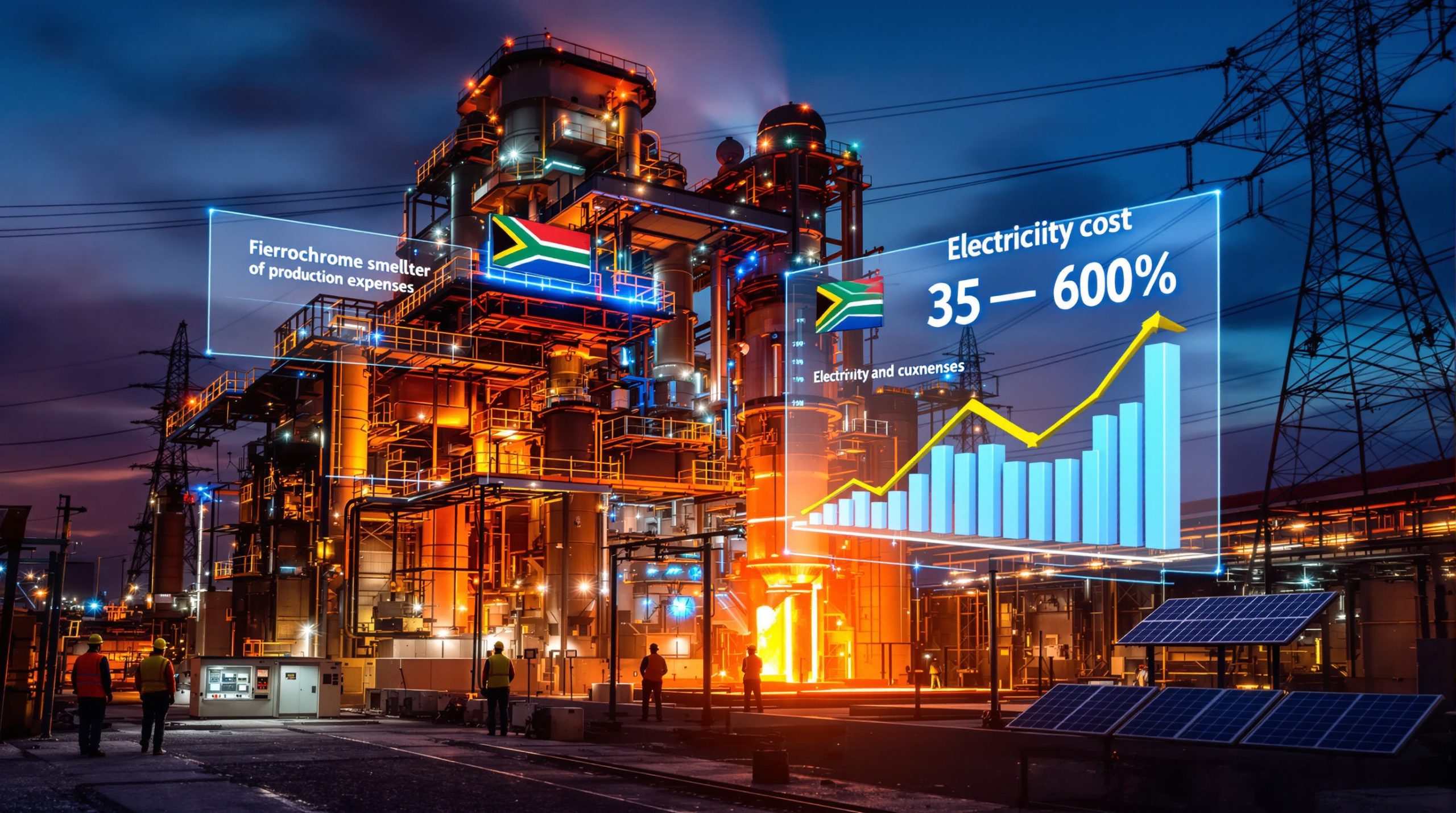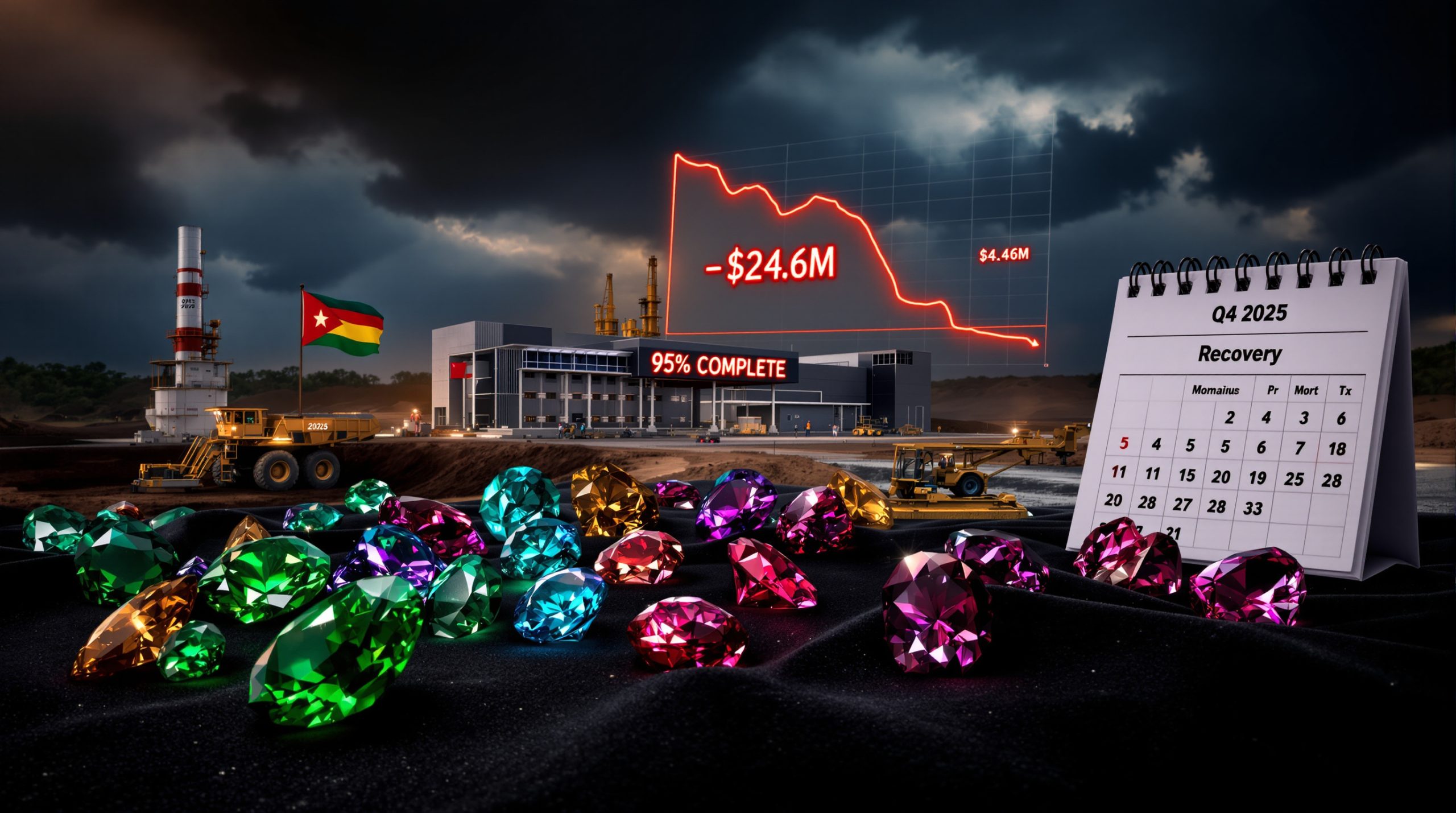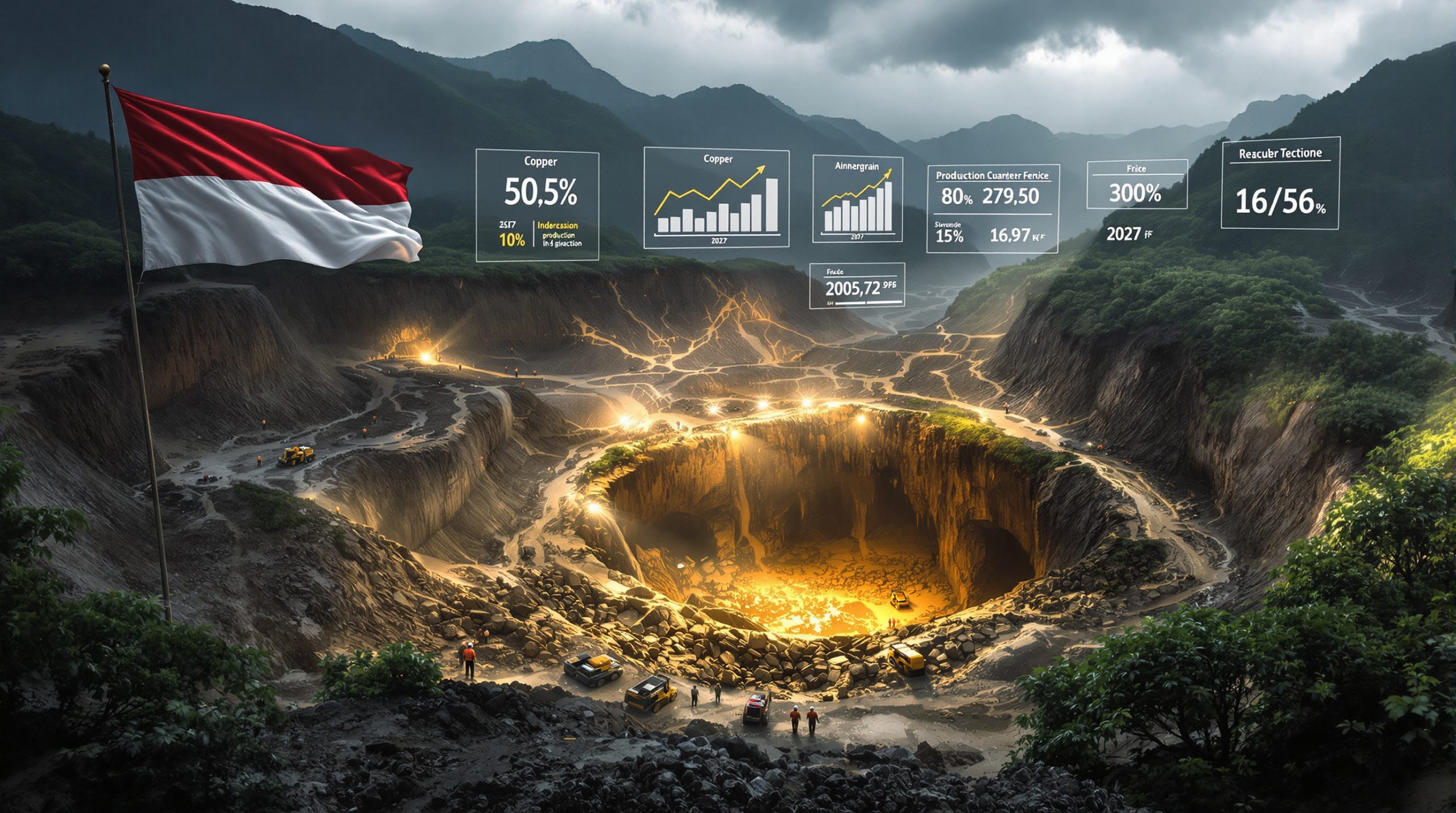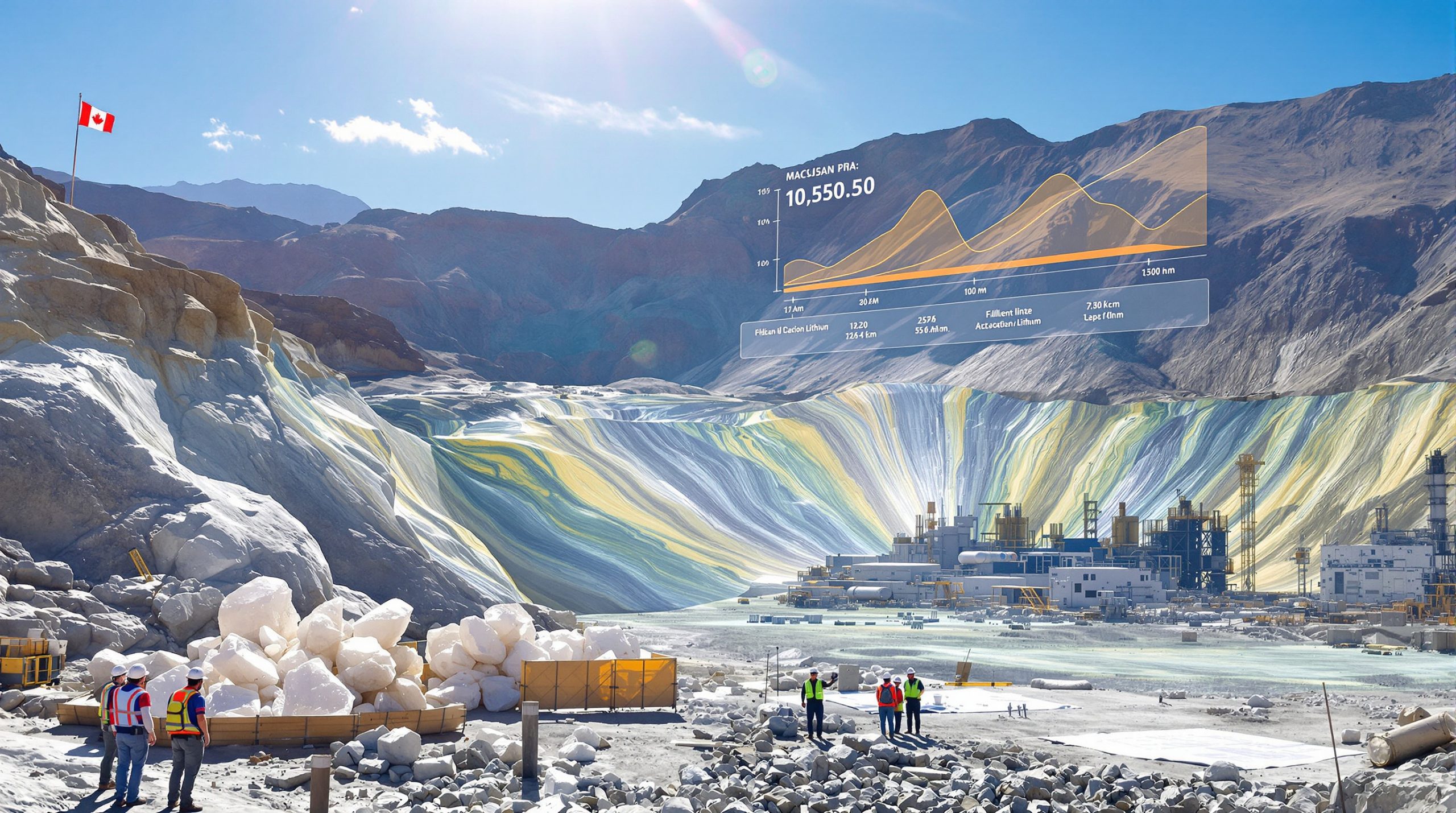Grasberg Mine Operations Halted: Search for Trapped Miners Continues
Indonesia's government and Freeport Indonesia have jointly agreed to suspend operations at the massive Grasberg mine, prioritizing the ongoing search for workers trapped following a catastrophic underground mudflow incident. The decision represents a significant development in what has become one of the mining industry evolution most serious safety incidents of 2025.
What Happened at the Grasberg Mine?
On September 8, 2025, approximately 800,000 tonnes of wet material suddenly flowed into the underground mining area at the Grasberg Block Cave operation, creating extremely challenging and hazardous conditions. Seven miners were trapped by the sudden mudflow, with rescue efforts immediately launched to locate and save them.
The search has been fraught with difficulty due to the sheer volume of material involved and the complex underground environment. In a somber development, two workers were tragically found deceased on September 20, leaving five still unaccounted for as rescue operations continue.
The trapped workers reflect the international nature of the operation, with the team including nationals from Chile, South Africa, and five Indonesian workers, highlighting both the global nature of modern mining operations and the widespread impact of this disaster.
"The search and rescue operation takes absolute priority over any production considerations," stated Mining Minister Bahlil Lahadalia in a press briefing following the incident, underscoring the Indonesian government's commitment to the trapped miners.
How Has Production Been Affected?
The operational stoppage has created significant disruptions to both output and revenue at one of the world's premier copper and gold mines. Since the incident on September 8, production has completely halted at the main underground operation.
Mining Minister Bahlil Lahadalia officially confirmed that production has not resumed since the incident occurred, with the joint decision between the government and Freeport Indonesia to maintain the suspension while rescue efforts continue.
The impact has been substantial enough that Freeport-McMoRan, the US mining giant that operates the mine, officially declared force majeure on September 25. This legal provision allows the company to temporarily suspend contractual obligations due to extraordinary circumstances beyond its control.
In its announcement, Freeport-McMoRan acknowledged several critical business impacts:
- Consolidated sales for both copper and gold will be substantially lower than expected for the third quarter of 2025
- A phased restart and production ramp-up may only begin in the first half of 2026
- Full recovery to pre-incident production levels might extend well into 2027
- Current operations are running at only about 30% capacity through smaller operations at the complex
This prolonged disruption at one of the world's premier copper mines comes at a particularly challenging time for global copper markets, which were already experiencing tight supply conditions. Recent copper price insights suggest this disruption could have far-reaching market effects.
What Rescue Efforts Are Underway?
Rescue teams continue working under extremely challenging underground conditions at the Grasberg site. The technical complexities of the operation cannot be overstated, with teams battling unstable ground conditions, potential secondary collapses, and the need to carefully remove massive amounts of material.
Current rescue operations include:
- Specialized underground mining rescue teams working around the clock
- Advanced ground-penetrating radar technology to locate potential voids
- Careful debris removal from affected areas
- Attempts to establish oxygen access to potential survival zones
- Drilling operations to create communication and supply channels
Communication with the trapped miners was last confirmed several days before September 15, though authorities remain cautiously optimistic. Modern underground mining operations typically include multiple emergency refuge chambers stocked with oxygen, water, and basic supplies designed to sustain miners in exactly these scenarios.
The mine's emergency response protocols include dedicated evacuation sites and emergency provisions strategically placed throughout the underground network. These safety measures represent standard practice in large-scale underground mining operations but face severe tests in catastrophic events like the September 8 mudflow.
"Every possible resource and technology is being deployed in this rescue operation," explained a senior mining safety expert familiar with the Grasberg operation. "These types of incidents represent the most challenging rescue scenarios in mining, requiring both technical expertise and incredible caution to prevent additional collapses."
What Is the Grasberg Mine's Significance?
The Grasberg operation stands as one of the world's largest gold and copper mining complexes, representing a crown jewel in both Indonesia's resource sector and Freeport-McMoRan's global portfolio of assets.
Key Mine Statistics
| Aspect | Details |
|---|---|
| Location | Papua province, Indonesia |
| Products | Copper, gold |
| Ownership | Majority owned by Indonesian government, operated by Freeport-McMoRan |
| Global Ranking | Among world's top 3 copper producers and top 10 gold producers |
| Production Method | Combined open-pit and underground operations |
| Economic Importance | Critical revenue source for Indonesian government |
| Employment | Approximately 30,000 workers (direct and indirect) |
The mine sits atop one of the world's richest porphyry copper-gold deposits, with grades significantly above global averages. Its strategic importance to Indonesia's economy cannot be overstated, as it represents both a major export revenue generator and a symbol of the country's resource wealth.
The transition from primarily open-pit mining to underground operations represents a significant technological evolution at Grasberg, with the Block Cave mining method allowing access to deeper, high-grade ore bodies that would be uneconomical to mine through traditional open-pit methods. This transition is part of the broader modern mine planning that is reshaping the industry globally.
How Has the Market Responded?
The force majeure declaration and production halt have sent significant ripples through global commodity markets, particularly impacting copper prices and supply projections.
Copper prices in Shanghai surged to a six-month high following the announcement on Tuesday, September 24, reflecting immediate market concerns about supply disruptions. The metal, essential for electrical applications, renewable energy infrastructure, and electric vehicles, was already experiencing tight inventory levels globally before the Grasberg incident.
Market analysts note several key impacts:
- Spot copper prices jumped approximately 3.5% in the days following the force majeure announcement
- Supply concerns have intensified amid already historically low global copper warehouse inventories
- Traders are actively recalculating global copper supply projections for late 2025 and 2026
- Mining companies with copper exposure have seen share price increases as the market anticipates higher sustained prices
The extended timeline for resuming operations suggests these market impacts could persist well into 2026, particularly as copper demand continues growing for renewable energy infrastructure, grid modernization, and electric vehicle applications. Additionally, gold price highs analysis indicates the incident may also affect gold markets as Grasberg is a significant gold producer.
What's Next for Grasberg Operations?
While rescue efforts remain the immediate priority, several key developments are on the horizon for the Grasberg operation once the current emergency has been resolved:
- A comprehensive technical assessment of underground damage will be required
- Engineering teams will develop detailed repair and recovery plans
- Safety protocols will likely be reviewed and potentially enhanced
- A phased restart plan will need regulatory approval before implementation
- Discussions between Indonesia's government and Freeport regarding the mining permit extension beyond 2041 will eventually resume
The timeline shared by Freeport-McMoRan suggests a multi-stage recovery process, with initial production potentially resuming in some capacity during the first half of 2026, but full operational recovery extending well into 2027.
This incident highlights the inherent complexities and risks in large-scale underground mining operations. Block cave mining, while efficient for accessing deep ore bodies, involves complex geotechnical considerations that require sophisticated monitoring and management systems.
"The recovery process for underground operations after a major mud rush event is inherently complex and time-consuming," explains a mining engineer with experience in similar recovery operations. "Beyond the immediate rescue efforts, comprehensive ground stabilization and infrastructure rebuilding will be required before safe production can resume."
How Does This Impact Indonesia's Mining Sector?
The Grasberg incident occurs at a pivotal time for Indonesia's mining sector as the country positions itself as a critical minerals powerhouse in the global transition to clean energy technologies. Under President Prabowo Subianto's administration, Indonesia has implemented policies to increase domestic processing of minerals and capture more value from its natural resources.
This high-profile mining emergency will likely prompt several significant developments:
- A comprehensive review of safety protocols at other major Indonesian mining operations
- Increased regulatory scrutiny of underground mining practices nationwide
- Potential acceleration of discussions regarding Freeport's long-term mining rights
- Renewed focus on emergency response capabilities across Indonesia's mining sector
The Indonesian government's approach to this crisis, placing human safety above production targets, demonstrates the evolving priorities in the country's resource management strategy. This represents an important precedent that other operations will likely be measured against in future incidents.
Indonesia's Mining Ministry has already indicated that lessons learned from this incident will inform future regulatory frameworks, particularly around emergency preparedness and response capabilities required for underground mining permits. Furthermore, the incident has highlighted the mine reclamation importance and safety considerations that must be addressed at all stages of a mining operation.
FAQs About the Grasberg Mine Incident
When did the incident at Grasberg mine occur?
The mudflow incident occurred on September 8, 2025, trapping seven workers underground at the Block Cave operation.
How many workers remain missing?
Following the discovery of two deceased workers on September 20, five miners remain unaccounted for as rescue operations continue.
When might production resume at Grasberg?
According to Freeport-McMoRan, a phased restart may begin in the first half of 2026, with full recovery potentially extending into 2027.
How has this affected copper markets?
The production halt has contributed to a six-month high in copper prices and raised significant concerns about global supply constraints through 2026.
What is the ownership structure of the Grasberg mine?
The mine is majority-owned by Indonesia's government but operated by US-based Freeport-McMoRan under a long-term agreement.
Are there discussions about the mine's future beyond this incident?
Yes, Indonesia's mining minister confirmed discussions with Freeport about extending the mining permit beyond its current 2041 expiration, though these talks will resume only after the current emergency is resolved.
Further Exploration
Readers interested in learning more about global mining operations and safety can explore related educational content on underground mining safety protocols, block cave mining methodology, and the growing importance of copper in the global energy transition.
Looking to Stay Ahead of the Next Major Resource Discovery?
Discover why significant mineral findings like those that could replace Grasberg's production can generate substantial returns by exploring Discovery Alert's dedicated discoveries page. With real-time alerts powered by the proprietary Discovery IQ model, you can position yourself to capitalise on the next major ASX mineral announcement before the broader market at https://discoveryalert.com.au/discoveries/.
